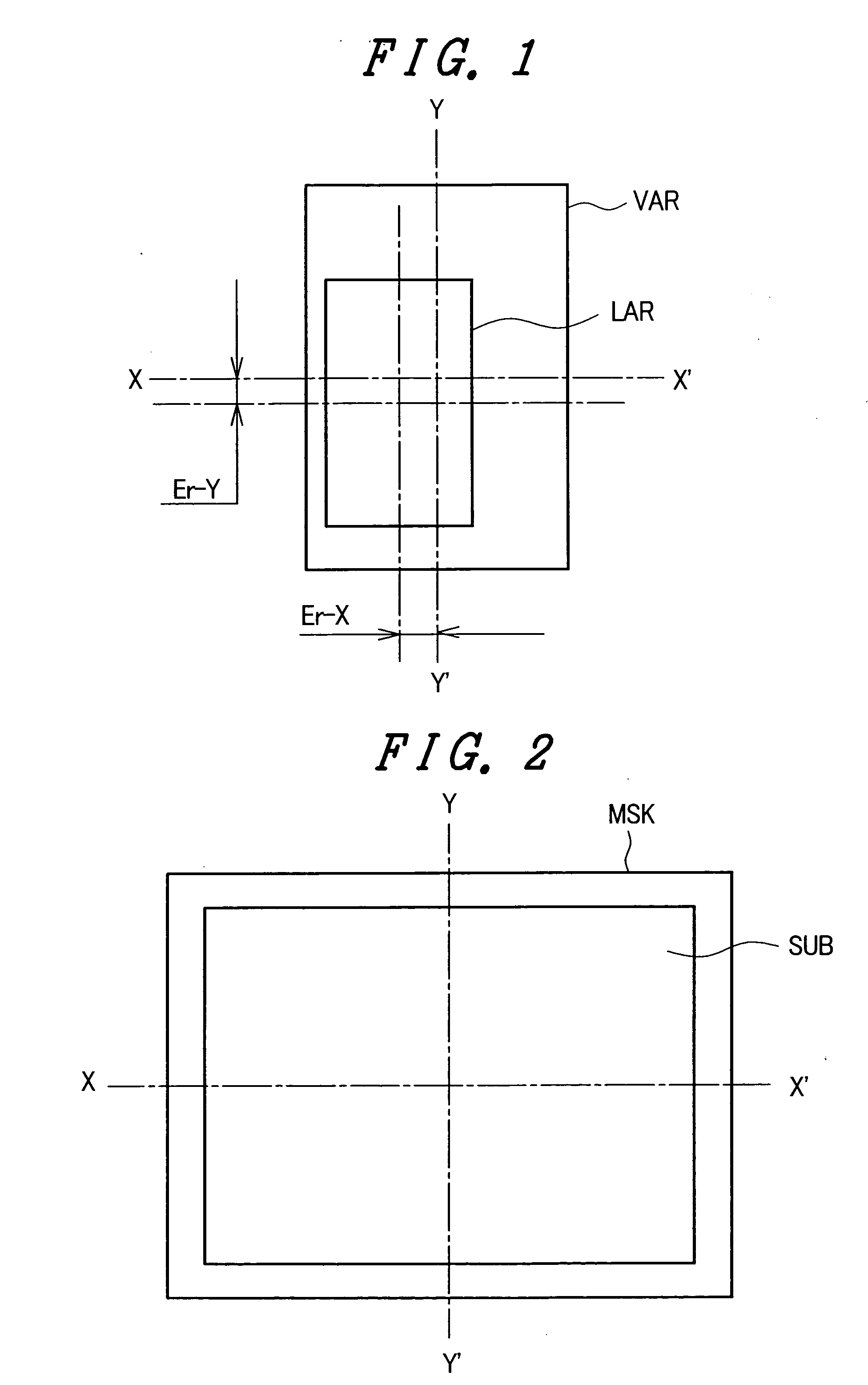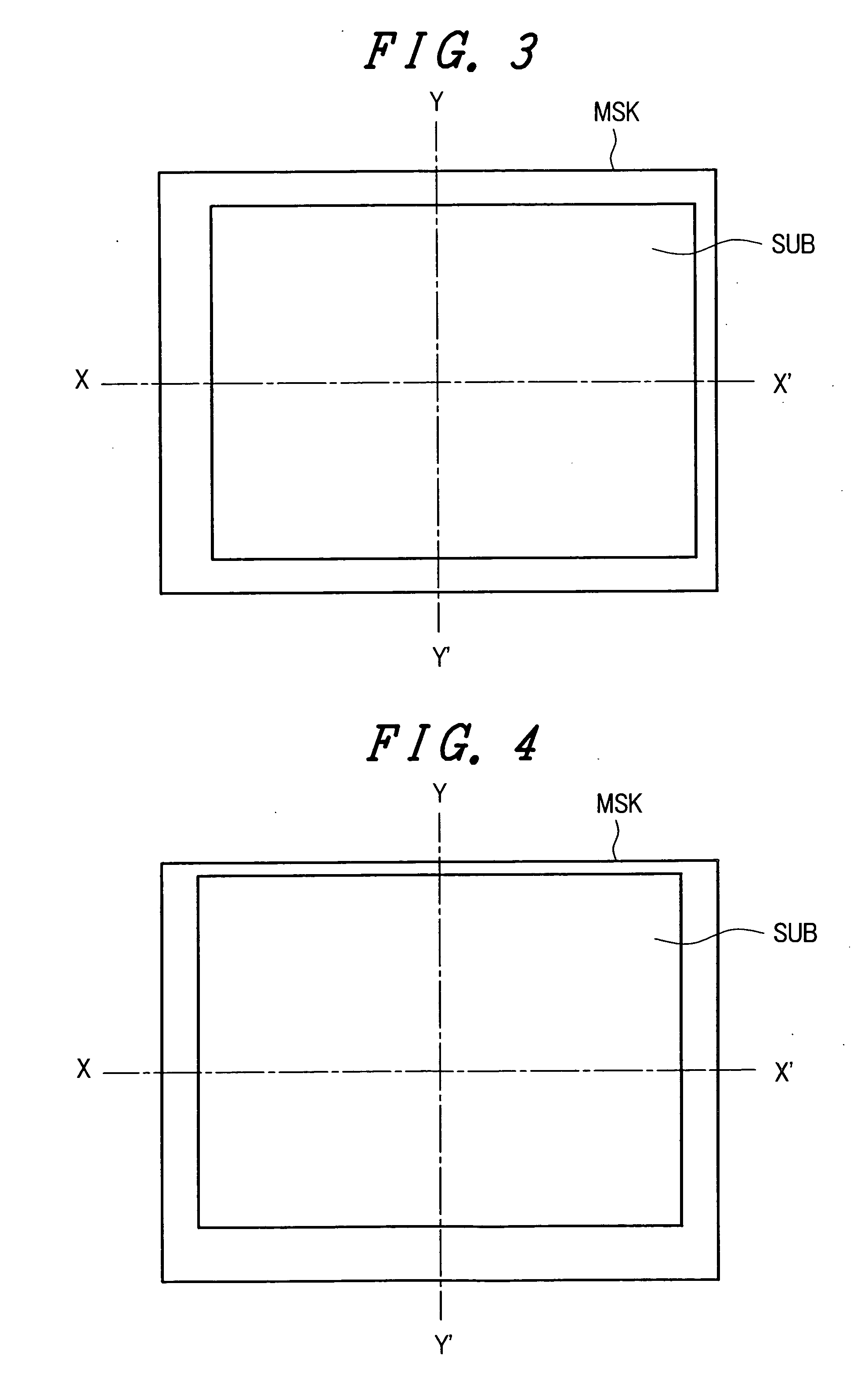Self-emitting display
a display and self-emitting technology, applied in the field of flat panel displays, to achieve the effect of improving the manufacturing tolerance, improving the yield, and improving the performance characteristics and display quality of the resulting organic el display
- Summary
- Abstract
- Description
- Claims
- Application Information
AI Technical Summary
Benefits of technology
Problems solved by technology
Method used
Image
Examples
first embodiment
[0058]FIG. 9 is a schematic plan view of an aperture of a light-emitting portion illustrating a first embodiment of the present invention. Exemplarily shown here are only three aperture rows at the center portion of a screen in the direction of Y-Y′. The size of the aperture LAR is largest at the center portion of the screen, and the width in the direction of X is graded so as to be narrowed by degrees with distance therefrom in the direction of Y-Y′. FIG. 10 is a schematic plan view of a signal line illustrating the first embodiment of the present invention. Shown here is only a signal line (drive power line) CL extending in the direction of Y-Y′ at the center portion of the screen.
[0059] As shown in FIG. 10, the power line CL formed on the glass substrate SUB is narrow at the center portion, and increasing in width by degrees in the direction of X with distance therefrom in the direction of Y-Y′.
[0060] In the organic EL displays of the present embodiment, a yield of almost 100% ...
PUM
| Property | Measurement | Unit |
|---|---|---|
| width | aaaaa | aaaaa |
| size | aaaaa | aaaaa |
| width | aaaaa | aaaaa |
Abstract
Description
Claims
Application Information
 Login to View More
Login to View More - Generate Ideas
- Intellectual Property
- Life Sciences
- Materials
- Tech Scout
- Unparalleled Data Quality
- Higher Quality Content
- 60% Fewer Hallucinations
Browse by: Latest US Patents, China's latest patents, Technical Efficacy Thesaurus, Application Domain, Technology Topic, Popular Technical Reports.
© 2025 PatSnap. All rights reserved.Legal|Privacy policy|Modern Slavery Act Transparency Statement|Sitemap|About US| Contact US: help@patsnap.com



